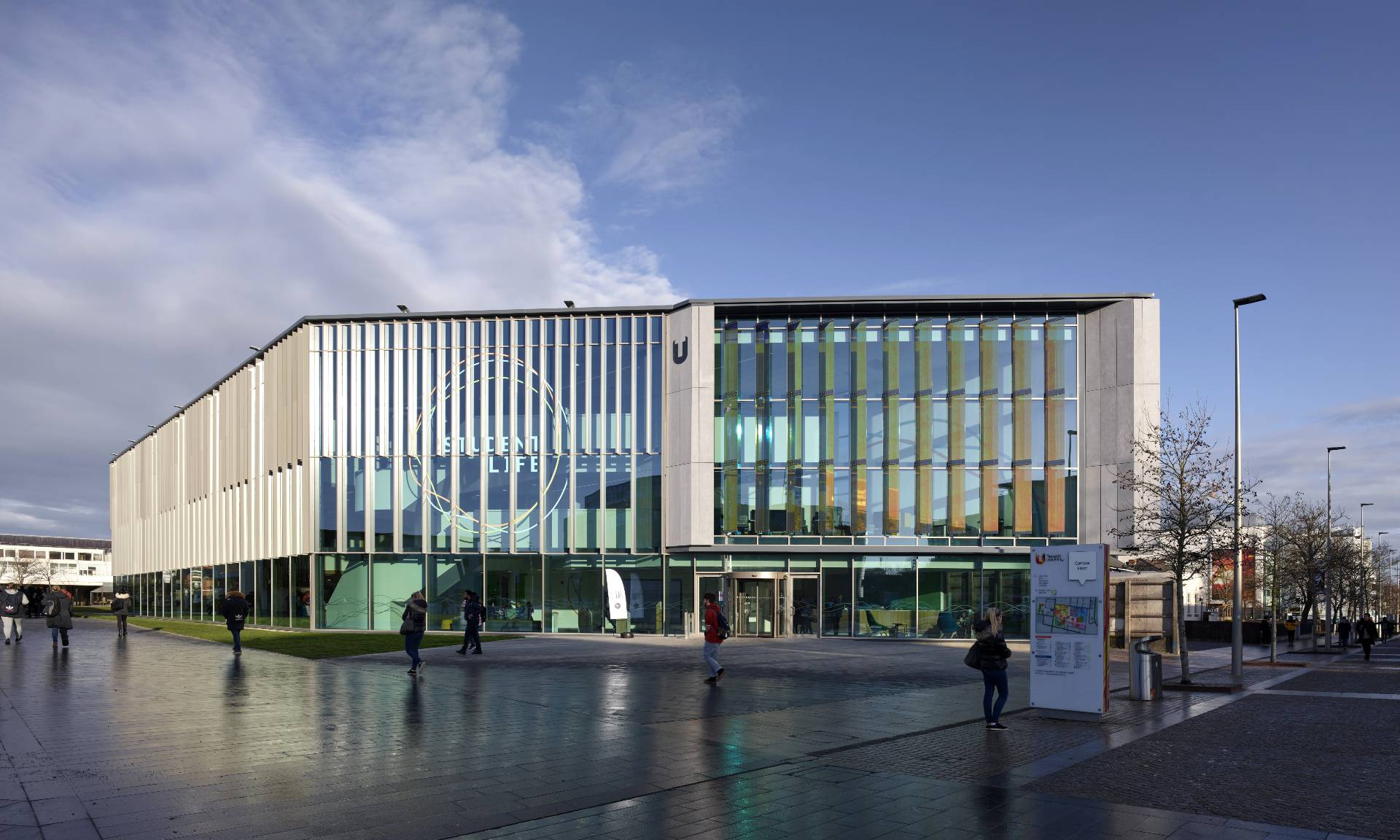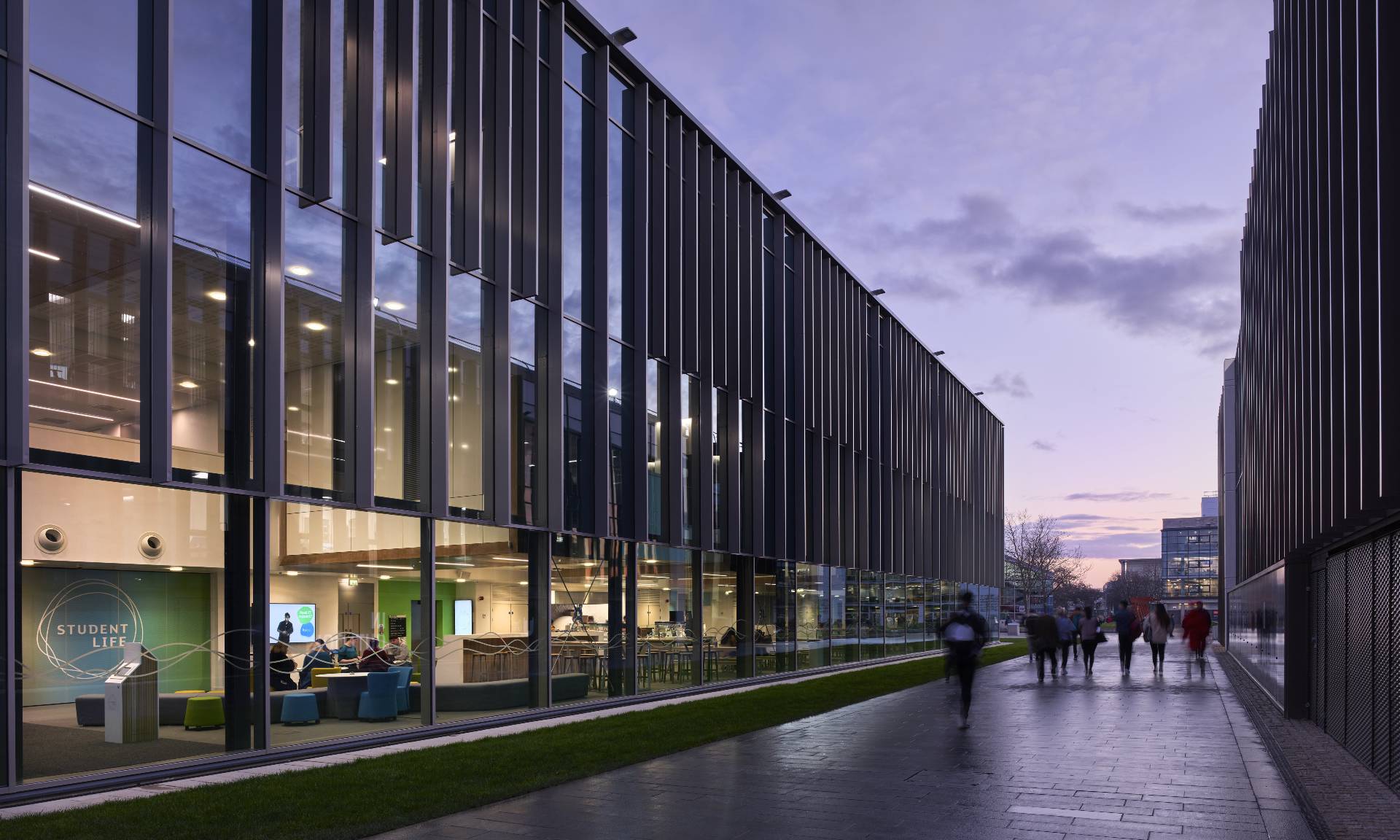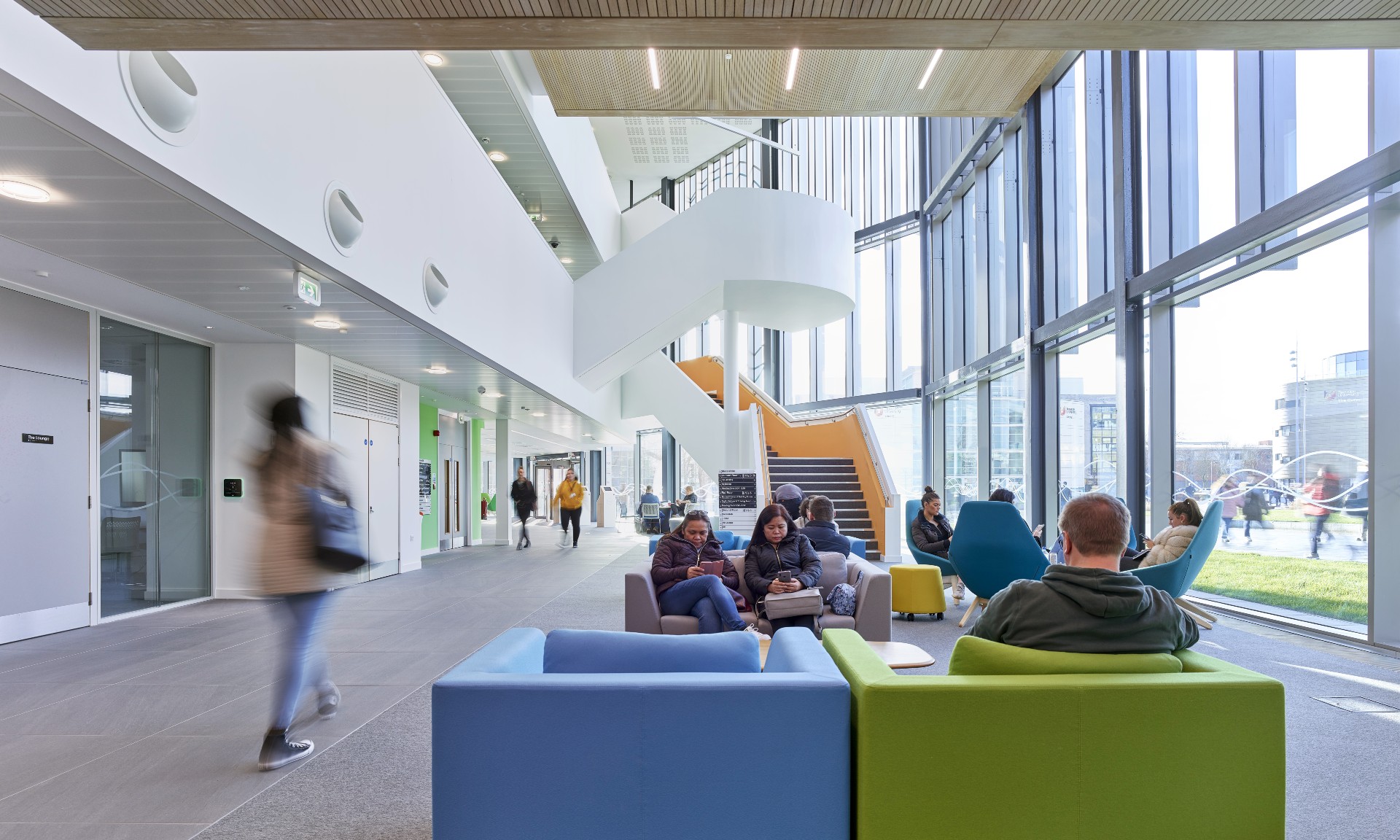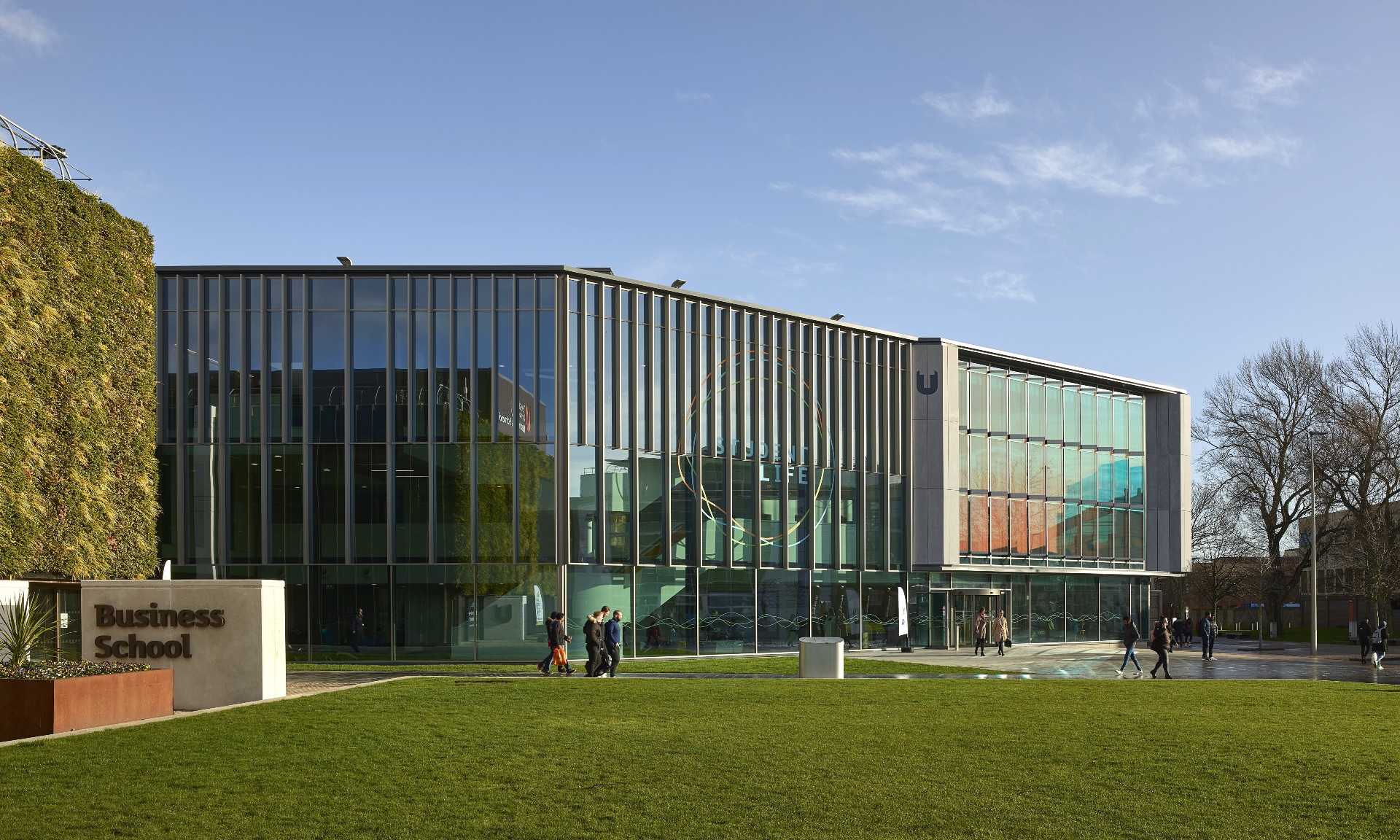A new focal point on Teesside University’s Middlesbrough campus, the Student Life Building
provides an open and welcoming environment where students can access support services, alongside a varied mix of learning spaces.
Addressing the perceived stigma which surrounds the pursuit of help and support for issues of mental health, the building has been designed to break down the barriers to access, providing an inclusive space for enhanced student wellbeing.
Supporting Student Life
The concept of the Student Life Building emerged from consultation with staff and students conducted as part of the development of the university’s ten-year Masterplan and Estates Strategy, which FaulknerBrowns led in 2016-17. The concept was to create a central location for students to access all of the information and services offered by the university to support student life outside of the seminar room or lecture theatre, with all of the services also accessible online, 24 hours a day, on or off campus. To do this the university embarked upon a programme of physical, digital and organisational change, co-locating student facing staff in this new central location.
To embed the facility at the heart of student life and promote a sense of ownership, the Student Life Building integrates the support services with a diverse range of learning spaces and a healthy food offer.

An Open and Inclusive Environment
It is crucial that the building overcomes any stigma which may prevent students from seeking help and support, and therefore vitally important to remove barriers which may discourage access. This was achieved by removing the distinctions between ‘learning’ and ‘support’ spaces to deliver “everything students need outside of the classroom”.
A series of timber clad pods contain twenty-six individual rooms which can be used for both private consultations and group study. Each cluster of rooms is accessed via a waiting area that can also be used for quiet study. The pods have been arranged to create a series of interlocking internal volumes which benefit from visual connectivity, daylight, and views, without compromising confidentiality when required. The scale of these spaces has been deliberately moderated to balance openness and connectivity with the need to create an environment which is appropriate for students who are distressed or are uncomfortable in a busy campus environment. This is particularly important given the support which is provided within the building for autistic students.
The building provides a diverse range of active, collaborative, contemplative and focused learning spaces. These more collaborative environments complement the library, which primarily delivers individual study space. A series of innovative teaching and learning spaces support the university’s adoption of increasingly diverse pedagogies and a growing emphasis on group study. The ‘Creator Lab’ is a test bed for innovative teaching, and the ‘Digital Futures’ centre provides digital skills support and facilities to explore the potential of new learning technologies.
In general, quieter, more private spaces are located higher up the building, with the ground floor providing an open learning, catering and orientation space.
Completing the Campus Heart
The simple form of the building belies its internal spatial complexity. Broadly rectangular in plan, the southern end of the building is chamfered to address the Campus Heart. The importance the university places on employability is emphasized here by the clear and distinctive expression of the double height ‘Student Futures’ space above the primary entrance.
The building reinforces the Campus Heart as the key location for central university facilities. Its form, orientation and transparency strengthen the main north/south route through the campus and improve wayfinding and security on key circulation routes.

A Focus on Wellbeing
Across the university sector, institutions are being challenged to improve the ways in which they engage with and support their students in what has been described as an epidemic of poor mental health and rapidly increasing demand for counselling and support services.
Enhancing wellbeing is the primary objective of the Student Life Building and the services it offers. Through enhanced wellbeing, the university aims to improve retention, employability and academic outcomes.
This focus on wellbeing is reflected in the design of the building, which seeks to promote the ‘Five Ways to Wellbeing’, behaviours which have been proven to enhance mental health, encouraging students and staff to be active, take notice, connect, keep learning and give.
The building delivers excellent user comfort alongside the high environmental performance demonstrated by the BREEAM Excellent and Energy Performance Certificate A rating. Controlled mechanical ventilation with heat recovery provides controlled fresh air and thermal comfort in all areas. Excellent daylighting is supplemented by artificial lighting, which supports user comfort whilst contributing to the character of the spaces. Noise and reverberation in open plan areas are controlled by slatted timber panelling to the meeting pods. Increased acoustic absorption at the upper levels of the building provides a quieter environment for more private discussions.
Materiality
The building is predominantly clad in two types of material. The eastern cellular block is clad in cementitious cladding panels with glazed slot window openings into the workspaces. The open learning spaces to the west of the building are enclosed by glazed aluminium curtain walling, with projecting mullions providing shading and a variation in appearance from different viewpoints.
The double height Student Futures space, orientated towards the Campus Heart and highly visible from Southfield Road, is shaded by fritted dichroic glass fins. The appearance of this distinctive material changes with variations in daylight and sunlight throughout the day, and from different viewpoints. This variation in colour is reflected in the ‘Life Lines’ branding which has been developed for the building, online services and staff uniforms.

Enabling Success in Learning and in Life
Since opening in January 2020, the building has rapidly become a vibrant and vital focus for students at Teesside University. It celebrates and expands the wide range of services the university provides and facilitates an ongoing dialogue to inform how students learn in the future.
The university has transformed the way it engages with its students both physically and digitally, and has created an inspiring building which enables success in learning and in life.
